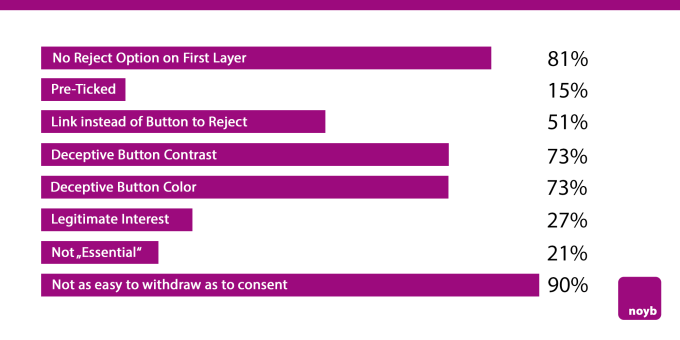
James Collier is chief data officer at M&C Saatchi Group AUNZ.
Is it just me or is the 3P (third-party) cookie conversation starting to hockey stick in intensity?
There’s still circa eight months of runway before those pesky 3P txt files get deprecated and many marketers and agency staffers must feel utterly overwhelmed.
Facing forward you have a future without 3P cookies. Love ‘em or hate ‘em, they still represent 25 years of digital infrastructure and marketing convention. Whether you’re running ahead of the curve or behind, 3P cookies still add a lot of value to today’s marketing investment, value that isn’t easily replaced.
Looking back you have years of business and marketing intelligence, benchmarks and models that will soon create a significant continuity challenge. Stitching together pre and post cookie data isn’t going to be easy.
Looking up you now have the board and CEO asking questions, seeking assurances and generally wanting to know ‘there’s a plan in place’, but even the best laid plans rarely survive their first contact with the enemy!
If that wasn’t challenge enough we then have ‘today’. ‘Today’ being every day between now and the day 3P cookies are officially sunset.
Today represents the mountain of work that’s still left to do!
The death of 3P cookies is a cataclysmic event and one we probably won’t really appreciate until it’s actually happened. The way the industry is responding to the challenge is testament to its gravity.
For starters we have 100’s of different platforms, publishers and partners working tirelessly to develop alternative targeting solutions. Some supportive of an open web, others publisher specific and some designed to work advertiser by advertiser.
Chat with independent adtech and you’ll learn about privacy compliant, consumer controlled, authenticated online identity solutions.
Talk to most premium publishers that have a robust logged in audience and you’ll get a run down on why 1P data is the silver bullet and audience match is the trigger.
Pick up the phone to Google and you’ll get the rundown on cohorts, their privacy sandbox and maybe some other avian themed ideas.
If you’ve still got the energy, you’ll find a good number of publishers, platforms and agencies that believe that contextual targeting can play an important role.
But as brilliant as it is to know the smartest minds in the industry are all pointed at this one meteoric moment, this is about more than just how we buy targeted ads.
Which is why it would be worth taking some time and noodling over the following with your team, your agency or a friendly tech partner;
How do we manage a fundamental change to the way we measure digital marketing?
Any business that measures success year on year is in for a shock.
The underlying measurement structure that we’ve built our historical benchmarks on, that helps frame digital marketing success, that demonstrates return on investment is changing.
As a result marketers and agencies need to work together, brand by brand, to build relevant alternate measurement models now.
These models need to run in parallel to the current methodology and they need to be socialised across both businesses so questions can be answered and important stakeholders feel prepared and comfortable with the changes they will inevitably see in 2022.
How do we manage an increase in digital marketing complexity and the subsequent resource impact?
Whether we realise it or not, 3P cookies support an efficient resource model. $200bn of global programmatic investment and hundreds of billions of dollars more of digital spend has been unified by the humble 3P cookie. Marketers and agencies have been able to activate complex digital marketing programs from a single seat, target audiences across thousands of websites from one platform, optimise significant investment in just a few clicks and measure the impact of that investment in one place.
With the removal of 3P cookies the digital delivery layer becomes more complex, with more buy types, more targeting types, more data management and fractured measurement.
There could very well be a flow on effect in terms of the resource required to manage these same digital marketing programs in 2022. More complexity means more time, more time means more people, more people means a higher cost.
How do we offer consumers a fair and reasonable value exchange?
As the government pushes ahead with privacy reform, a time will come when advertisers and publishers need to sense the check value exchange that exists between the consumer and themselves. Right now the value exchange is broken. One side gets an endless stream of data that can be monetised over and over again, the other side gets relevant ads. Hardly seems fair.
When the Government announced their intention to review the Privacy Act, it’s stated aim was threefold; Ensure privacy settings empower consumers, protect their data and best serve the Australian economy.
It’s that last point that deserves some serious consideration. In a market where massive revenue is generated from the collection and activation of Australians data, what can be done to better serve the Australian economy?
Should Australians be financially compensated for their data? It would certainly improve the value exchange and any step that puts more money in the pockets of Australians is good for the economy and good for the ATO.
Maybe the industry should take the lead here or we might all suffer if the government intervenes.
Just a thought.
So yes. Finding a solid solution or suite of solutions to deliver targeted advertising is important. Let’s keep working on it. But let’s think bigger. Because it’s better to have a plan you don’t need than no plan at all.
The Link LonkJune 01, 2021 at 05:30AM
https://ift.tt/3i345mN
If you only read one article on cookies this year, don't read this one - AdNews
https://ift.tt/2CmfU4u
Cookies
















